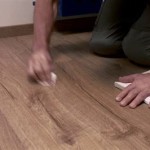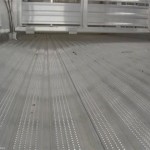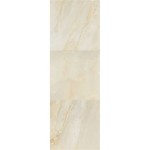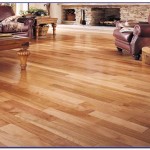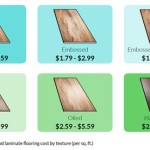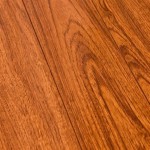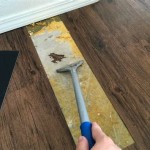Laminate Flooring Moisture Barrier On Wood Subfloor: Understanding the Imperative
Installing laminate flooring on a wood subfloor requires careful consideration of moisture management. Moisture can seep up from the subfloor and damage the laminate flooring, leading to buckling, warping, and other issues. Therefore, installing a moisture barrier is crucial to protect your flooring investment and maintain its longevity.
A moisture barrier, typically a polyethylene film or sheet, acts as a protective layer between the wood subfloor and the laminate flooring. It prevents moisture from migrating into the laminate, ensuring its structural integrity and preventing premature deterioration.
Types of Moisture Barriers for Wood Subfloors
Two primary types of moisture barriers are available for wood subfloors:
- Polyethylene Film: A cost-effective and commonly used moisture barrier, polyethylene film is typically 6-mil thick and provides reliable moisture protection.
- Adhesive Vapor Barrier: More expensive than polyethylene film, adhesive vapor barriers adhere directly to the subfloor, creating a stronger seal and reducing the risk of moisture infiltration.
Installation Process
Installing a moisture barrier on a wood subfloor is a relatively straightforward process:
- Prepare the Subfloor: Clean and level the subfloor, ensuring it is free from debris or unevenness.
- Unroll the Moisture Barrier: Spread the moisture barrier across the subfloor, allowing for a 6-10 inch overlap at seams.
- Seal the Seams: Use moisture-proof tape or mastic to seal the seams between the moisture barrier sheets, preventing moisture penetration.
- Secure the Moisture Barrier: Tape the edges of the moisture barrier to the subfloor to secure it in place.
- Protects from Moisture Damage: The primary benefit of a moisture barrier is to prevent moisture from damaging the laminate flooring, extending its lifespan.
- Prevents Mold and Mildew: Moisture accumulation on the subfloor can create an ideal environment for mold and mildew growth, which can cause health issues and decrease the air quality within the home. A moisture barrier helps prevent these problems.
- Reduces Squeaking: A moisture barrier can help reduce squeaking in laminate flooring by preventing moisture from reaching the subfloor and causing it to expand and contract.
Benefits of Using a Moisture Barrier
Installing a moisture barrier on a wood subfloor offers several benefits:
Conclusion
Installing a moisture barrier on a wood subfloor is an essential step when installing laminate flooring. It protects the flooring from moisture damage, prevents the formation of mold and mildew, and reduces the likelihood of squeaking. By understanding the types of moisture barriers available and following proper installation techniques, you can ensure your laminate flooring remains in excellent condition for years to come.

Quietwalk 360 Sq Ft 6 X 60 3 Mm Underlayment With Sound And Moisture Barrier For Laminate Engineered Floors Qw360b1lt The Home Depot

What Is A Moisture Barrier And When It Needed For Flooring Inc

Floorcomfort 4 Ft W X 25 L 5 Mm T Premium Foam Moisture Resistant Flooring Underlayment 100 Sq Fan Fold In The Department At Com

Underlayment Buyer S Guide

Silent Silver Underlayment High Density Foam Underlay

Roberts Airguard 100 Sq Ft 40 In X 30 2 Mm 5 1 Underlayment With Microban For Laminate And Engineered Wood Floors 70 105 The Home Depot

What To Know Before Flooring Underlayment
Minimizing Moisture From Subflooring Kaltimber Timber Merchant Flooring

Hardwood Floor Underlayment Ultimate Guide

Quietwalk 100 Sq Ft X 3 33 34 1 4mm Acoustical Underlayment With Vapor Barrier For All Vinyl Plank Flooring Qwlv100 The Home Depot
Related Posts

